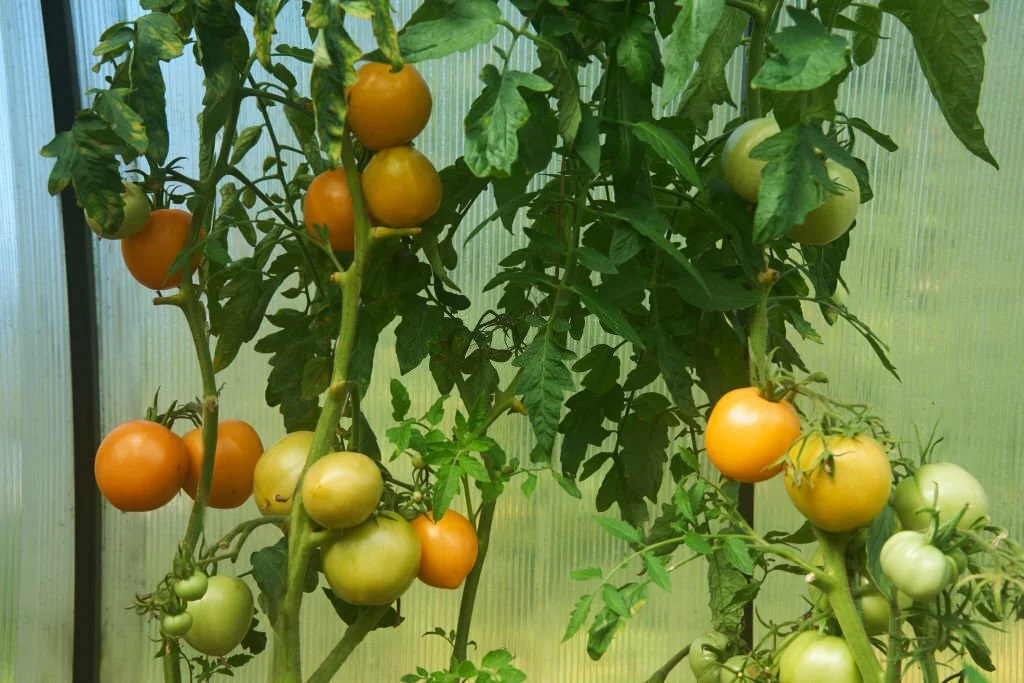Cloning tomato plants is a green thumb’s secret to creating an abundant and thriving garden. The process of cloning allows you to replicate the best traits of a healthy tomato plant, ensuring that you have a continuous supply of your favorite varieties. Whether you’re an experienced gardener or a novice, this guide is here to demystify the art of cloning tomatoes. By following the steps outlined in this article, you can unlock the magic of propagating tomato plants. Get ready to discover the satisfaction of nurturing your own tomato clones from a source plant you love, preserving its genetics, and cultivating an impressive tomato harvest year after year.
Preparing for Cloning
Before you embark on your tomato cloning journey, it’s essential to prepare thoroughly. Timing is crucial; cloning is best done during the growing season when the parent plant is at its healthiest. Select a parent tomato plant that is robust, free from diseases, and showcases the characteristics you wish to replicate. Gather the necessary tools and materials, which typically include scissors or pruning shears for precise cutting, rooting hormone to encourage root development, and small pots or containers. The success of your tomato clones begins with these early preparations, ensuring you have the right foundation for a flourishing garden.
Choose the Cloning Method
Cloning tomato plants offers flexibility with various methods to choose from. The two most common methods are stem cuttings and suckers. Stem cuttings involve taking a portion of a healthy stem and encouraging it to grow roots. Suckers are small shoots that develop between the main stem and branches, and they can be rooted to form new plants. The method you choose depends on your preference and the specific needs of your garden. Stem cuttings are ideal for preserving the exact traits of the parent plant, while suckers provide a quicker and simpler way to clone. As you consider which method to employ, think about your goals and the characteristics you want to replicate in your tomato clones. Both methods can yield successful results, offering you a choice based on your individual gardening style and the time you have available.
Taking Tomato Cuttings
Taking tomato cuttings is a crucial step in the cloning process. Once you’ve selected your preferred cloning method (stem cuttings or suckers), it’s time to carefully harvest these plant pieces from your healthy parent tomato plant. Here’s how to do it:
For Stem Cuttings:
- Select a healthy, disease-free stem on the parent plant that measures around 4-6 inches in length.
- Using sharp scissors or pruning shears, make a clean, angled cut just below a leaf node. A leaf node is where leaves connect to the stem and where roots will eventually develop.
- Remove any leaves from the lower part of the cutting, leaving only a few at the top to minimize moisture loss.
For Suckers:
- Identify a sucker, a small shoot that grows between the main stem and a branch, on your parent tomato plant.
- Gently grasp the base of the sucker and wiggle it to separate it from the parent plant.
- Remove any leaves from the lower part of the sucker, as these can be submerged in the rooting medium.
Regardless of the method you choose, handle the cuttings with care to minimize stress and damage. It’s crucial to make clean cuts to ensure the best chance of success in the cloning process.
Rooting the Cuttings
The next step in the cloning process is encouraging the cuttings to develop roots. This is where rooting hormone and the choice of a suitable rooting medium come into play:
- Rooting Hormone: After taking the cuttings, dip the cut end in rooting hormone. This substance contains growth-promoting auxins that encourage root formation. It’s a valuable tool for boosting the success rate of your clones.
- Rooting Medium: The choice of a rooting medium is crucial. Common options include potting soil, perlite, or a mixture of the two. Some gardeners also root their cuttings in water. Each medium has its advantages. Soil provides essential nutrients, while perlite offers excellent aeration. Rooting in water allows you to observe root development, but transplanting into soil may be necessary later.
- Planting Cuttings: Plant your cuttings in the chosen rooting medium, ensuring they are buried to a suitable depth (typically a few inches). Water the medium lightly to maintain adequate moisture without saturating it. Place the cuttings in a warm, well-lit area, but avoid direct sunlight.
- Maintaining the Right Conditions: To encourage root development, maintain a consistently warm temperature of around 70-75°F (21-24°C). Humidity is also vital; you can create a humidity dome or cover your cuttings with a clear plastic bag to help trap moisture. Be patient, as it may take a few weeks for roots to develop.
By providing the right conditions and care, your tomato cuttings will start to develop roots, marking the transition from cuttings to independent tomato plants.
Transplanting and Caring for Clones
After your tomato cuttings have successfully rooted, it’s time to consider their transplantation and ongoing care. Follow these steps to ensure your tomato clones thrive:
- Transplanting: When the clones have developed strong roots and have a few sets of leaves, they’re ready for transplanting. Gently remove them from the rooting medium and plant them in individual pots or a larger container filled with well-draining, nutrient-rich potting soil. Make a small hole for each clone, place it in the hole, and gently pack the soil around the base.
- Caring for Clones: Position your newly transplanted clones in a location that receives at least 6-8 hours of sunlight each day. Tomato plants love sunlight. Water your clones consistently, ensuring the soil stays consistently moist but not waterlogged. Provide support in the form of stakes or cages as your tomato clones grow. This helps them stay upright and encourages healthier fruit production.
- Fertilization: Tomato plants are heavy feeders. Begin fertilizing your clones with a balanced, water-soluble fertilizer, following the product’s instructions. As the clones grow, switch to a fertilizer with higher phosphorus content to encourage fruit production.
- Pruning: Regularly prune your tomato clones by pinching off the suckers that form in leaf axils. This practice helps channel the plant’s energy into fruit development.
Troubleshooting Common Issues
While cloning tomato plants is a rewarding process, issues can arise. Here are some common problems and how to address them:
- Wilting: If your tomato clones appear wilted or droopy, they may be experiencing stress. Ensure they have adequate water and are not exposed to extreme heat. Providing shade during the hottest part of the day can also help.
- Disease: Keep an eye out for signs of disease, such as yellowing leaves or dark spots. Remove affected leaves promptly to prevent the spread of disease. Avoid overhead watering, as wet foliage can encourage fungal issues.
- Weak Growth: If your clones exhibit weak growth or leggy stems, ensure they are receiving enough light. Consider moving them to a sunnier spot or providing supplemental grow lights.
- Overcrowding: Avoid overcrowding your tomato clones, as this can lead to poor air circulation and disease. Transplant them into larger containers if needed.
- Inadequate Fruit Production: If your tomato clones are not producing fruit, they may need more phosphorus. Switch to a fertilizer with higher phosphorus content to encourage flowering and fruiting.
Conclusion
Cloning tomato plants is a remarkable way to replicate your favorite varieties, preserve their traits, and enjoy a bountiful harvest. From taking cuttings and rooting them to transplanting and ongoing care, the process is a rewarding journey for gardeners. Troubleshooting common issues is part of the learning experience, and with practice, you’ll become a seasoned tomato cloning enthusiast.
As your tomato clones grow and thrive, they’ll not only yield delicious fruits but also provide a sense of accomplishment and connection to the natural world. So, whether you’re a seasoned gardener or a beginner, get ready to embark on your cloning adventure and savor the joy of growing your own tomatoes from your treasured parent plants. Happy gardening!



